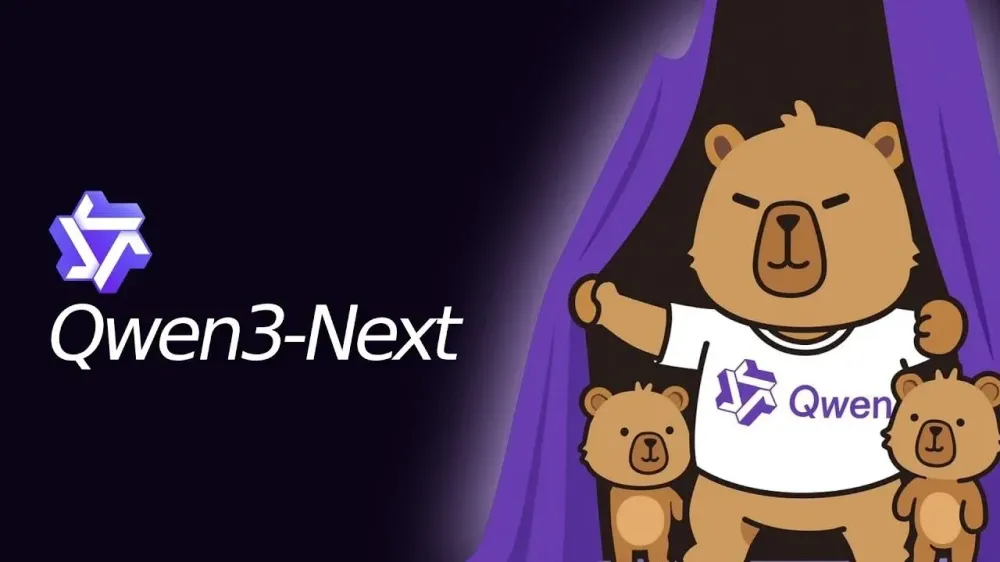For years, the race to build better large language models (LLMs) has been a simple game: bigger is better. More parameters, more compute, and more cost. But what if we told you there's a new way? Alibaba's new Qwen3-Next models are challenging that entire philosophy with a revolutionary design that delivers flagship-level performance at a fraction of the cost.
Forget brute force. Qwen3-Next, specifically the 80B-A3B versions, proves that architectural elegance is the real key to unlocking the next generation of AI. These models have a massive 80 billion parameters in total, but thanks to a clever trick, they only activate a minuscule 3 billion for any given task. This is a game-changer for anyone building on the cloud.
Innovation #1: The Ultra-Sparse Engine
The secret is a new, ultra-sparse Mixture of Experts (MoE) architecture . Think of it like a highly specialized team of 512 experts. When you give the model a task, it doesn't wake up every single expert. Instead, it intelligently routes the request to just 10 of them, plus one shared expert. This extreme sparsity—a mere 3.7% activation rate—is the source of Qwen3-Next's incredible efficiency. The result? The models are claimed to be 10 times cheaper to train and 10 times faster for inference than their predecessor, Qwen3-32B, especially for long-context tasks.
Innovation #2: The Hybrid Brain
Processing long documents is notoriously expensive in traditional LLMs because of a technical bottleneck known as O(n^2) complexity. To put it simply, the longer the text, the exponentially slower the model gets. Qwen3-Next solves this with a groundbreaking hybrid attention mechanism .
The model's brain is split into two parts:
- Gated DeltaNet: This is the workhorse, making up 75% of the model's layers. It's a linear attention mechanism with a blazing fast O(n) complexity, perfect for quickly scanning long sequences.
- Gated Attention: The remaining 25% of the layers use a standard attention mechanism. This is the precision part, ensuring the model's accuracy and recall are top-notch.
This 3:1 ratio, proven optimal through extensive testing, allows Qwen3-Next to handle long documents with both speed and accuracy. It’s a powerful, native solution that offers a fundamental improvement over traditional workarounds.
What This Means for Your Cloud Deployment
This isn't just about technical jargon; it's about real-world benefits for your business:
- Unmatched Efficiency: The 10x faster inference claims for long contexts translate directly to lower API costs and faster application performance, especially for tasks like document analysis and code review.
- Top-Tier Performance: Despite its efficiency, the Qwen3-Next-80B-A3B-Instruct model reportedly approaches the performance of the flagship Qwen3-235B model . The "thinking" version even claims to outperform closed-source models like Gemini-2.5-Flash-Thinking on multiple benchmarks.
- Developer Freedom: The models are released under the commercial-friendly Apache License, Version 2.0 . This permissive license empowers you to build and distribute applications without worrying about restrictive terms.
- Seamless Integration: You can easily get started with these models via the Alibaba Cloud Model Studio, NVIDIA API Catalog, or popular frameworks like SGLang and vLLM.
While these models still require significant GPU memory to host all 80 billion parameters , their computational efficiency makes them a clear winner for large-scale, production-level AI applications.
The Future is Efficient
Qwen3-Next is more than just a new model; it's a new direction for the entire AI industry. It proves that the path to better performance isn't just through more parameters, but through smarter, more efficient architecture. This release is a preview of what's to come, laying the groundwork for future releases like Qwen3.5 , and signaling a future where innovation, not just scale, drives the next great leap in AI.



